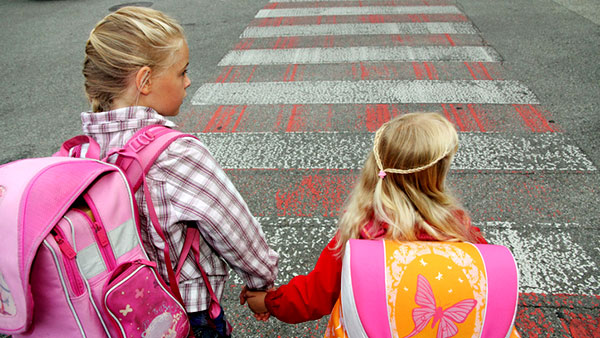
Children do not perceive danger the way adults do.
Drivers prepare for the unexpected in school zones, near bus stops and past crossing guards.
But drivers should also be on the alert wherever they drive that children could be present.
From 2011-2020, 85 school-age pedestrians died in school transportation-related crashes. Some of the most common types of pedestrian fatal events involve a child being hit or struck:
- By a vehicle moving in a straight line
- When NOT at an intersection
- By a vehicle other than a school bus
(Source: National Highway Traffic Safety Administration’s Traffic Safety Facts.)
Children 5 to 10 years old made up 24% of pedestrian fatalities in school transportation-related crashed. Drivers need to understand some of the unique concerns associated with this age group:
- A 6-year-old’s eye level is about 36 inches above the ground.
- Their smaller size makes them difficult for drivers to see, especially if they are standing between parked cars on the side of the road.
- Young children have two-thirds of the peripheral vision that adults have, and they have difficulty determining the source of a sound.
- Children are still learning to judge distances and speeds. They cannot judge accurately how fast a car is traveling or how long it will take to cover the distance. They can easily misjudge whether it is safe to cross a street.
- Children are spontaneous and have trouble stopping an action once started.
- Children younger than third grade are unlikely to be aware of traffic when playing with friends or riding bikes.
- Parents can overestimate their children’s ability to cross the street safely. Many elementary school-aged children don’t understand traffic signals and don’t know how to anticipate drivers’ actions. Children under 6 years old rarely understand the true nature of a dangerous situation.
- Children also tend to overestimate their abilities, thinking that they can run across a street before the flashing light changes or a car approaches.
- Drivers and child pedestrians each assume (incorrectly) that the other will yield the right-of-way.
Drivers can help keep children safe by slowing down wherever you drive, yielding to pedestrians in crosswalks, obeying traffic signals and waiting behind stopped school buses.
This loss control information is advisory only. The author assumes no responsibility for management or control of loss control activities. Not all exposures are identified in this article.
